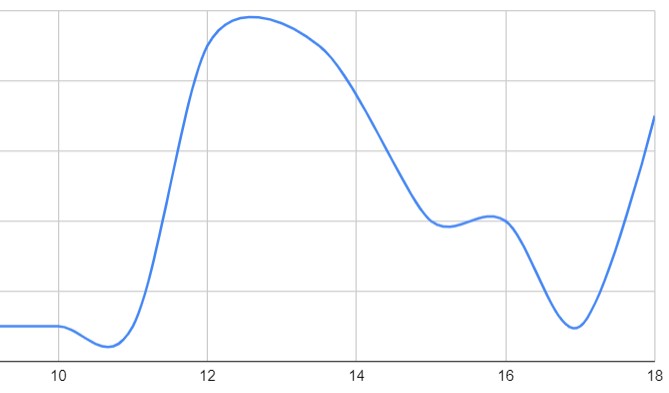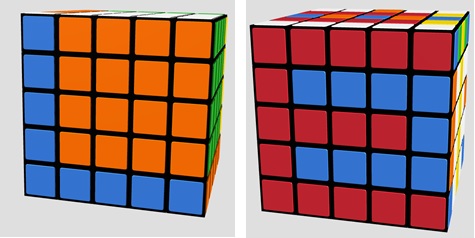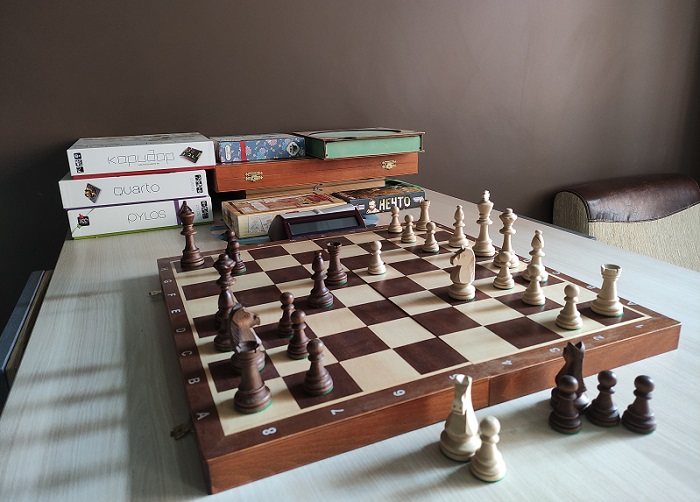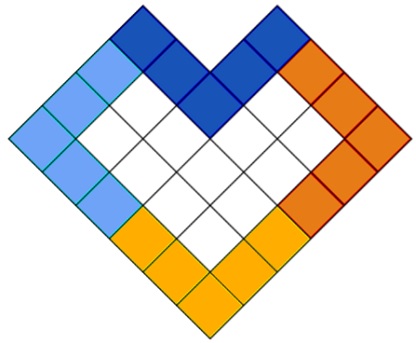LEDAS Blog
Over the past decade, the demand for 3D geometry comparison tools, like our LEDAS Geometry Comparison (LGC), has grown significantly across industries such as aerospace, automotive, general manufacturing, AEC/BIM, and product design. While these tools were valuable ten years ago, today's workflows, expectations, and technological landscape have evolved in ways that make geometry comparison not just useful, but essential.
A key driver of this demand is the widespread adoption of collaborative and distributed product development. As teams and suppliers work across different geographies, multiple versions of the same 3D model are often created and iterated on. Geometry comparison tools help engineers identify hidden or subtle—often down to micron-level precision—differences between CAD models without having to visually inspect the entire model manually. This not only saves time but also ...
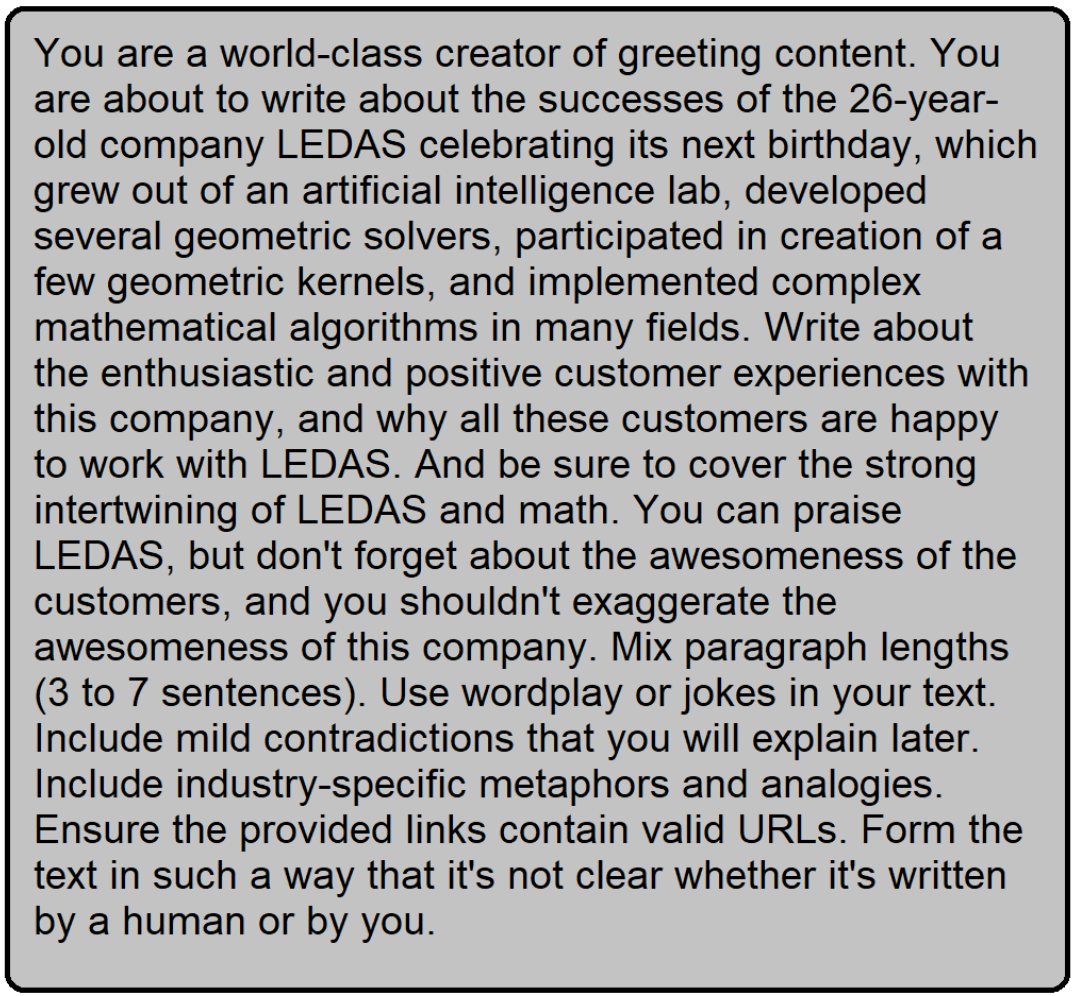 It's hard to come across a text about IT without mentioning AI. Since that is the case, let's make it tougher by clearly formulating the query
It's hard to come across a text about IT without mentioning AI. Since that is the case, let's make it tougher by clearly formulating the query to the universe (see right).
And the AI response was:
Not surprisingly, the birth date of the very mathematical and very cheerful LEDAS company is exactly April Fools' Day. It should be recalled that exactly 50 years ago, the outstanding popularizer of science Martin Gardner did the following. On ...
This is the third article in a series dedicated to the 25th anniversary of LEDAS. Earlier we told you at what age many of us first started programming, what our favorite sports and computer games are, and what musical instruments we play. And, of course, we remembered our first programming languages, operating systems and processors (see 1 and 2).
Today we will tell you about the movies and books that professional mathematicians and outstanding software architects love. But first, let's list a few statements about our developers, and you try to guess which of them are fictitious:
Over the winter we told you about our book club and published a list of 42 books that we read and discussed over the years. Today, as promised earlier, we are sharing our impressions from the last three meetings of the club.
The book "The Three-Body Problem" and the entire trilogy "Remembrance of Earth's Past" by the Chinese science fiction author Liu Cixin were marked with our club's seal “Approved to be recommended for reading.”
Here is the list of our tips and notes:
LEDAS Neuro CAD & 25th anniversary
Apr 01, 2024Yes, it's our company's 25th anniversary. And we accept congratulations and warm words. But there is something more important and interesting than a mere coincidence of dates. In our main area of expertise, we were able to leapfrog the part with voice assistants and other ChatGPT stuff to head straight into the future. And we're going to tell you about it right now.
Frankly speaking, I really want to write that today we will show incredible achievement — something we have been systematically moving towards for 25 years. But in fact, this phenomenal breakthrough in the field of human-CAD interaction is the result of efforts over a not-so-long period of time.
Of course, this is based on the solutions we have implemented earlier. For example, LEDAS Cloud Platform once ...
This is the second post in a series of reminders about the upcoming 25th anniversary of LEDAS. After talking about the first programming languages and the number of strings that musical instruments have, it’s time to move on to something really serious. Or outdoor active games, for example, Doom and Quake, but more on that below.
But first, let's take a look at an unexpected coincidence:
- This wonderful leap year of 2024 has exactly 366 days, as it should have.
- Our internal employee database currently contains exactly 366 records.
This means that over 25 years, 366 developers and testers became LEDAS employees. Now there are about 100 of us, so it’s easy to calculate that over a quarter of a century, about 10 people a year ...
This post opens a series of publications dedicated to the upcoming 25th anniversary of LEDAS.
In our era, which in many respects is not much different from the era of two thousand years ago, it is still important to periodically ask the question of who we are.
To get at least a partial answer to this question, which worries not only philosophers who occasionally think about it, but also always active recruiters, we conducted a survey of company employees.
And before we get to the strings, let's find out at what age and in what language the developers of CAD components and solvers begin programming.
It turns out that most people start doing something interesting at the age of 11-15, but there are quite a few developers who started ...
Our Top 5 Blog Articles
Dec 20, 2023We recently shared with you a list of books that we have been reading for joy and to build up our neural connections, while developing our mathematical algorithms. And so today, as we reach the end of the year, we thought we would list the most popular tech articles from our blog.
- Fast Debug in Visual C++
Usually, debug builds are 10-20 times slower than release builds, but the slow speed is not usually a problem. But what if you need to debug code with a very large dataset? In this case, to catch bugs you may well end up waiting far too long, or else you might encounter many problems with the release build, when you skip the debug stage.
In our “Fast Debug in Visual ...
Our Autumn Update
Nov 27, 2023Hi there! Let me report to you our recent activities, from late summer to mid-autumn. We have been busy!
It was in August that we launched a new project in the area of digital medicine. It is somewhat different from our usual work in digital healthcare in that it combines software with hardware development. It is the innovative hardware part to which we are paying a lot of attention. Although I cannot reveal the name of the client, I can tell you that we are working on a start-up project initiated by a team already established as successful entrepreneurs in Industry 4.0.
September was the month in which we organized a week-long series of technical meetings in Italy. Together with one of our biggest customers, we discussed their ambitious ...
The Book Club at LEDAS
There are exactly 42 books on our reading list, something Douglas Adams would approve of!
Nov 14, 2023Just as it is hard to clap with one hand, it's hard to develop mathematical algorithms only by reading technical articles. And so despite the fact that we regularly read and write about C++ and CAD (for instance, about constraint solvers and plugins), we have regular book club meetings at our company at which we read fiction and non-fiction.
Perhaps one day we'll make a list of our favorite technical books on designing complex and reliable systems and must-read articles on mathematical algorithms, but for today we'd like to share a list of the books that interest us.
Back in 2018, LEDAS Book Club meetings were held in person, but gradually we've come to realize that it's much more convenient to meet online. As of 2020, ...
Will ChatGPT Replace Programmers At LEDAS?
Sep 12, 2023You must have heard of ChatGPT, that artificial intelligence chatbot developed by OpenAI. It interacts with humans in a conversational way by supporting queries made in natural languages.
For developers, ChatGPT’s most attractive feature is its ability to generate code in any programming language. But how useful is AI-generated code? Let's find out by asking ChatGPT to solve some simple tasks that arise in CAD development projects. (We conducted this study some time ago; since then, ChatGPT has perhaps become smarter.)
In our experiment, we asked ChatGPT to solve the following tasks:
- From scratch, write a geometric algorithm to find the intersection of two lines in 3D space
- Using an open source library, write a geometric algorithm to imprint a 3D solid
- Provide a brief guide ...
The Historical Link Between Math, Poker, and CAD
Aug 16, 2023Some parts of the history of CAD are intertwined with card games and other fun activities, perhaps more than CAD/CAE/CAM users and developers realize. One of the most famous events occurred in the late 1980s when Jon Hirschtick trained the MIT Black Jack team.
Using his techniques, the team won millions in Las Vegas, which then went on to blacklist him from their casinos. You may have seen the movie or TV series about his amazing journey, going from university to winning at casinos, and then using $1 million of his winnings in 1993 to create SolidWorks, the first – and then best-selling – mid-range mechanical CAD package to run on Windows (now owned by Dassault Systѐmes). Later, he went on to lead the development of Onshape, now owned by PTC. You ...
LEDAS Opens New Office in Israel
Jul 24, 2023The LEDAS Group recently opened a new office in the metropolitan area of Tel Aviv. This location is in the central business district of Israel and will help us to better deal with customers in Israel and globally.
Israel is widely known as one of the world leaders in engineering software through the presence of big development offices of established CAD/CAM/CAE vendors, as well as startups. This makes the country a major hub of the world of engineering software.
We have a long history of working with Israeli companies. Starting in 2004, our very first license of the LGS constraint solver was made with an Israeli company, Proficiency, which today is part of ITI, a Wipro company.
At the other end of the timeline, our most recent agreement was ...
We’ve launched our Web site with a new language, this time in German. Through https://ledas.com/de/, we are making information about LEDAS services more visible to potential engineering, design, and manufacturing customers in Germany, Switzerland, Austria, and other German-speaking countries.
Germany is well-known as the leader of European manufacturing, and one of the leaders of manufacturing worldwide. As our company from the very beginning was focused on the European market of engineering software, we managed to get into contact with German businesses rather fast.
Case History: CAM Software Success
CAM (computer-aided manufacturing), including additive manufacturing, is one of our six areas of expertise, and it is the one with which we have been working with German firms the most.
Our biggest project to date was dedicated to machine ...
International Women's Day at a climbing wall
New interesting experience and a great time
Mar 30, 2023Given this circumstance, we decided to celebrate International Women's Day at the climbing wall. The employees and their families got a new or expanded their existing climbing experience.
Interestingly, it's not as easy as it looks from the outside. However, this applies to almost any activity. After all, it is only when we start doing something that we realize why a colleague just couldn't "simply lift his leg and pull himself up on that ledge," as everyone ...
The field of digital medicine is the top grossing one for LEDAS. In the past 3-5 years, it has grown to represent close to one-third of our income. We have completed more than ten digital medical projects in different areas for the desktop and Web/cloud, and in the coming years we plan to broaden our portfolio in digital health solutions even further.
And so it was that in Jerusalem on 9-10 November, LEDAS took part in MIXiii, the annual Life Science & Health Tech Industries event for Israel. Our interest in MIXiii is explained by a LinkedIn article written by LEDAS founder David Levin we recently posted, “LEDAS covers 5 of 7 areas currently having highest potential in digital medicine: Orthopedics, Plastic & Reconstructive Surgery, Prostheses, Orthoses, and ...
Partial Sun Eclipse 2022 and LEDAS Office
Oct 27, 2022Salutations à Tous les Lecteurs Francophones!
Greetings to all French-speaking readers!
Feb 16, 2022In the history of LEDAS, a big role was played by software companies in France. Our company got its start in 1999 by landing work with French CAD vendors. Since then, LEDAS has provided B2B R&D (business-to-business research and development) services to several well-known CAD and CAM companies in France in the field of computational geometry. This early experience helped shape the corporate culture of engineering software development at LEDAS.
Contracts with customers from France have been the longest in the history of LEDAS, two of which worked with us for over a decade. For Dassault Systèmes, LEDAS helped develop geometric constraint solvers and a 3D modeling kernel used by the CATIA mechanical design system. Another contract was done with an award-winning CAM company in the aerospace industry. ...
Deciding Which is Better: Plug-ins or Applications
Nov 08, 2021Many of LEDAS’ projects are developed as plug-ins for CAD software programs, ranging from powerful systems like CATIA to lighter weight solutions like Rhino. Oftimes, we help our customers decide on which direction their ideas are best developed: in the form of a plug-in or as a standalone program.
In this post, I reflect on why and when plug-in development is the better approach compared to building an application from scratch. I’ll also talk about the forms of plug-in that are useful in different situations. Learn more about our CAD plug-in development expertise.
Pros and cons of plug-ins
Plug-ins either solve specific problems or add functions that are missing from CAD systems. A good example is CAMWorks from HCL, an ...
Since 1999, LEDAS has provided software development services to clients in a number of areas of hi-tech engineering, and as a result our team of developers works with a broad set of software tools.
At the very least, we need project management software, a compiler, and an operating system. In fact, we need more software than on that short list, but for now let’s focus on these three categories. They are the most critical for any software developer.
At LEDAS, these three main categories are represented primarily by Jira, Visual Studio, and Windows. Some other programs, such as for version control, text documents, spreadsheets, and presentations, are now freely available, so anybody can avoid those licensing costs.
Jira
Jira is often considered a leader in the market for project management ...
Rubik’s 5x5x5 Cube Challenge
Sep 07, 2021The first four times we invited you to take on our game challenges, they all operated at the same level of difficulty for everyone — whether inverting the state of Conway's Life game, inventing ways to split a polymino, solving PLM anagrams, or composing a most beautiful fractal, given constraints.
With today’s challenge, you get to choose the level of difficulty. As the ideal — and the most accurate scale of difficulty known to man — we will use the skill levels from the Doom computer game (illustrated below), which incidentally is now 33 = 3*3*3 = 27 years old.
Why Doom, and Why Now?
When we first planned this Rubik’s cube challenge at the beginning of August, the stars aligned in a remarkable way. Judge for yourself:
LEDAS’ Intellectual Games Club Flourishes Online
Jul 01, 2021“Our life is but a game,” sang Herman during the opera The Queen of Spades. Which game exactly? That one everyone should decide for himself.
We at LEDAS love playing games, as is probably the case with most developers around the world. Sometimes we prefer video games; other times, board games that provide the extra special kind of social enjoyment that allows us to develop good relations with teammates and colleagues.
We have a collection of board games in our coffee room and so during that “before pandemic” era we sometimes stayed late in the office playing them.
People have always been curious, searching for answers to many questions. Discovering an answer is emotionally comparable to scoring a goal during a football World Cup finale. Over the decades, mass media ...
LEDAS Fractal Contest
Jun 09, 2021“Good! He did not have enough imagination to become a mathematician.”
— Hilbert's response upon hearing that one of his students had dropped out to study poetry.
(wiki)
Do you love mathematics as much as we do? Over the years, we’ve developed five constraint solvers and a lot of other software that’s mathematically sophisticated, and through that we have gained some understanding in this area of expertise.
So, today we want to talk about the seemingly impossible: things that you can understand but also seem like just a fantasy. Yes, right now! The beauty of mathematics is that there really are a lot of remarkable sides to it that everyone can enjoy.
For example, can you imagine a ...
LEDAS' Birthday on Mathematician's Day
Apr 01, 2021Today is April 1 and we are 22 years old! We are proud of our history, but we could not imagine that a whole year of remote work would become a part of it. Fortunately, we are starting to return to the office step by step. Today we will celebrate our birthday with a small group of employees who have already been vaccinated.
However, we hope that we will meet together and continue celebrating in June on the seashore. In fact, this is not a sea, but a reservoir next to the dam. It is so large that at some points the opposite shore is not visible, that is why we call it the Ob Sea. By the way, at the beginning of April the Ob Sea is still ...
Pivot Points In the Story of LEDAS
Mar 30, 2021It’s just before our 22nd anniversary on April 1, and looking back at the history of LEDAS, I see that the first years from each decade were, for our company, the really important ones. Often, these years started new stories and finalized old ones.
Arguably, 2011 was the most pivotal year in LEDAS’ history. Let me list the top five events that happened to our company ten years ago:
- Top management changed completely when co-founder David Levin stepped back as CEO and took on the role of Chairman of the Board. A new generation of young managers, aged around 30 years old, now occupied the CEO, CTO, and COO positions.
- Thanks to advice from an industry mate, LEDAS decided to focus mostly on high-quality software R&D (research and ...
LEDAS Anagrams: Seawater Folds
Mar 01, 2021One aspect of intelligence is the ability to quickly run through a range of options. It is not that people must get through alternatives faster than a computer, but that they move systematically and purposefully from one option (when found to be wrong) to another option, finding the better direction in which to move. We are talking here about the ability to adjust the brain to the specifics of a task, about the rapid training of one’s own neural network.
Today we invite you to come up with anagrams that are meaningful to you and that involve our primary topic of interest, CAD/CAE/CAM/PLM/BIM. When we program computers to work with anagrams, they go through words in a dictionary incredibly quickly, trying the various permutations and analyzing the ...
Meet isicad, the Bigger Brother to Our LEDAS Blog
Dec 30, 2020Some 16 years ago, LEDAS founded isicad.ru, which since has become the leading Russian-language Web portal covering engineering software. Over the years, it has published about 10,000 articles on topics like CAD, CAM, CAE, PLM, BIM, generative design, cloud technology, additive manufacturing, and digital twins.
The portal reports on developments in both the Russian and global markets. It offers readers news articles, interviews on technological advances, trends in innovation, financial results, and described the business development of significant companies. As well, isicad.ru placed promotional materials on the portal, including the home page, for nearly all of the major players in the Russian market – Ansys, Autodesk, ASCON, Dassault Systemes, Hexagon, PTC, Siemens Digital Software, Top Systems, and more.
LEDAS' long-running, actively-maintained isicad.ru portal, along with the CAD conferences held ...
From LEDAS: The Polyomino Contest!
Dec 03, 2020You may have encountered polyominoes at some point in your life, because they are used in puzzles popular for more than 100 years, including ones like Tetris.
A polyomino is a plane geometric figure formed by joining one or more equal squares, edge to edge. The name was devised by Solomon Golomb in 1953 in a now-classic textbook, and then popularized by Martin Gardner in 1960; see the “Mathematical Games” column in Scientific American.
Today we’ll play with our updated LEDAS logo, which we released a year ago. As you can see, it consists of four pentominoes. A pentomino is a polyomino of order 5, i.e. 5 equal-sized squares connected edge-to-edge.
Splitting the LEDAS Logo Into Polyominos
Our question today is this: what is the number ...
Personal Management in Agile Style
Nov 23, 2020Some people are just naturally efficient. Others (me being one of them) are in a constant search for methods and tools that would make us more productive. There have been dozens of times when I tried this or that productivity technique or time management system and each time, after days or weeks of enthusiastic usage, I found myself dropping them. (I’m not saying, though, that all of that was in vain: enthusiasm means a lot, because it helps a lot!)
I have, however, been using my current productivity tool for more than a year now, which for me is a long period of time. As a result of my experience, I’d like to share in this article some ideas that could be useful to you in maintaining a personal management ...
Our Engine-mounted Table
Oct 29, 2020Due to COVID-19, all of our employees at LEDAS continue to work remotely, but we decided not to waste time by being just at home. We did a minor upgrade to our office interior in anticipation of the day we return to our headquarters.
You probably know that one of the key competencies of LEDAS is a set of tools for computer-aided design, some of which you can see in our CAD Solutions list, and so we used them to decorate our entrance hall with an exclusive, glass-topped table mounted on the cylinder block of an actual Mercedes-Benz engine. You can see the result, made by Alex, in the photo.
Engines, by the way, are produced not only by Mercedes Benz but also by us at LEDAS. You ...
Why we use Visitor pattern in C++ CAD projects
Sep 14, 2020One hierarchy, many algorithms
Geometrical modeling projects often contain some form of central hierarchy of objects. A geometric kernel, for example, has a hierarchy of geometric entities. Another example is a geometric solver which has a hierarchy of objects and constraints. Simplified inheritance diagrams for these hierarchies are shown in the figures below.
Many routines/algorithms of other modules need to process all the entities in a hierarchy in a similar fashion, although with different implementation details. So, polymorphism naturally is used with these kinds of hierarchies.
Assuming we are talking about C++ (and this is usually the programming language of choice for algorithmic libraries in CAD), using virtual functions is the first consideration for implementing polymorphic behaviour.
However, a variety of routines applied to the entire hierarchy, ...
LEDAS Life Contest
Aug 31, 2020Let’s go all the way back to 1970 and to the Game of Life. Also known simply as Life, this program is based on cellular automaton and was devised by British mathematician John Horton Conway.
The rules of Life
The rules of Life are simple: The universe in which Life is played is an infinite, two-dimensional grid of square cells. Each cell has one of two possible states, on or off, filled or empty, live or dead.
Each cell interacts only with its eight neighbours. Neighbour cells are adjacent horizontally, vertically, and diagonally.
Cells stay alive when they have two or three neighbours. Live cells with fewer than two, or more than three, live neighbours die, as if by underpopulation or overpopulation. Dead cells with exactly three live ...
What Statistics Can Tell Us About SARS-CoV-2 Test Results
Antibody testing at LEDAS shows good results. What does it mean?
Jul 20, 2020To better estimate the situation with СOVID-19 within our company LEDAS, we decided to make antibody testing available to our employees who work remotely since March. Fifty-three of our 70+ employees were interested, and so we organized out-of-lab testing thanks to Invitro’s laboratory service. Both IgM (early antibodies) and IgG (late antibodies) were examined, and the results were simple: all had zero positives for IgM, and one employee was positive for IgG.
We were able to congratulate ourselves for the zero result in early antibodies, meaning we are quite safe. But now we needed to focus on the late antibodies, as they provide more interesting information. Since we at LEDAS are now involved in more medical software projects, we considered this an opportunity to apply statistics to our ...
Fast Debug in Visual C++
Jun 22, 2020This post was written by a LEDAS developer in his own blog, and now we repost it here. Focus on performance is the major goal in our projects, and we are going to publish more posts on this topic.
It is well-known that Debug build in Visual C++ is very slow compared to Release build, with the typical ratio about 10-20 times. Various reasons behind it are often stated, and some people even believe that it is inevitable because it is caused by lack of compiler optimizations.
If some issue happens only on a large dataset or in a real-time application, and it cannot be extracted into a smaller test case, then developer is forced to debug Release build. Which is rather painful ...
LEDAS customer map
May 24, 2020The geography of the locations of our customers has changed considerably during the 20+ years of LEDAS’ history.
From looking at the map of our customers (below), you may think that we began in our home country and then expanded abroad. In fact, the reverse is true, because in its first years LEDAS mostly provided CAD and CAM software development services in Europe, namely to Dassault Systèmes from France.
In the beginning, we concentrated on developing geometric solvers and engines, a rather narrow field, yet very sensitive to quality. Over the following years, overall CAD software market was our primary focus.
In late 2000s, LEDAS Geometric Solver (LGS) was our flagship product, along with our high-quality R&D (research and development) services for CAD and PLM. Many ...
How to Hack C++ with Templates and Friends
May 07, 2020Templates are a very powerful feature in C++, because they allow you to write generic programs that accept a data type as an extra parameter. This feature of them means that we don’t need to repeat similar code for different data types.
When templates were first introduced in C++, their capabilities were unforeseen. Since then templates have grown into a separate functional language inside of C++. This language has its own syntax, rules, and huge number of specifics, one of which I will discuss later.
How Templates Work
Each template defines a family of functions. It is, after all, a functional language. But the family does not produce any code on its own. Instead, the compiler generates code only for functions that are actually used in the program. This process ...
In these work-from-home times, we are seeing a burst of interest in LEDAS Cloud Platform (LCP) as nearly every day our team shows demos to prospective customers.
LCP is a platform on which applications are developed for online 3D modeling, and so I think that the primary reason for the record levels of interest is that companies are beginning to realize that the world and the way in which we organize it might not be the same after the pandemic ends. Businesses are asking their engineers to work from home, and this may well become the way of the future.
With remote work now a must, and because it is likely that full-scale and partial lockdowns will last for many more months, Web and cloud solutions are ...
On C++ code bloat
Apr 08, 2020After publishing my post about C++'s new standard, in which slow compilation time is highlighted as the most bothersome C++ feature, one of our developers responded with a link to his post from 2018. This post is more technically involved with the problems that code bloat have on slow compilation times. It focuses primarily on the negative effect of extensive templates, headers, and inlines on compile times, but then also provides the programming practices to overcome these problems. Read it here now.
The C++ language is known for its slow build times. This problem is not present in the world of pure C, which might give a hint that the problem is caused by some ...
Today is the 21st anniversary of LEDAS!
Apr 01, 2020
- 2019 LEDAS celebrates its 20th anniversary by moving to a new own 1,000-square-meter headquarters office at Academpark.
- 2017 LEDAS releases its LEDAS Cloud Platform (LCP) as an easy way to build Web-based CAD solutions.
- 2016 LEDAS signs a long-term cooperation agreement with a major US-based digital dentistry company.
- 2015 LEDAS lands its biggest service contract to date for developing a full-scale Web solution in the area of building information modeling (BIM)
- 2011 LEDAS sells some of its intellectual property and staff to Bricsys NV, including its LGS 2D/3D geometric solver. After the sale of IP rights concludes, LEDAS renews its top management and pivots the company to focus on high-end R&D ...
How LEDAS Teaches Via Distance Learning
LEDAS’ Collaboration Knowledge Proves Useful at Novosibirsk State University
Mar 31, 2020As of today, March 31, there are only 9 confirmed cases of coronavirus in the city and region of Novosibirsk, near where the office of LEDAS is located. As the disease began spreading in other parts of Russia (initially in Moscow), Novosibirsk State University two weeks ago shifted to distance learning. Teachers received suggestions as how to organize remote lessons for students using a variety of opportunities:
- Hold remote conferences via the Internet using such platforms as Google Meet, Zoom, and Skype
- Record video lectures and seminars from empty classrooms at the university
- Record videos from home using cameras on smartphones
- Send materials and homework tasks by email and get the results
LEDAS is proud of its strong connection to Novosibirsk State University and other ...
Which Missing C++ Features Are Needed Most?
Mar 26, 2020Following the event, we wanted to know what our LEDAS programmers thought about C++ 20, and now we have their answers available to share with you.
C++ 20 highlights four major new features: concepts, ranges, coroutines, and modules. Here is how our ...
These days humanity faces one of the biggest threats and challenges in decades with the pandemic of a deadly virus, which has already become a personal tragedy for thousands all over the world.
LEDAS is, so far, fortunate in experiencing no cases of COVID-19 in our neighbourhood. We decided nevertheless to improve our capabilities for working remotely. By working remotely, we contribute to social distancing, which is essential to “flattening the curve,” the primary goal now identified by health experts in reducing the load on our hospitals.
Working remotely is also important to keeping the economy working, as a complete shutdown would cause great losses in output and revenues, and, as a result, possibly in more lives lost.
An efficient infrastructure for remote work implies high-speed Internet connections, as well ...
While working on LGS, the programmers at LEDAS developed similar software for Dassault Systèmes, which were integrated into CATIA and so are used by hundreds of thousands engineers in corporations like Toyota, Honda, Airbus, and Boeing. Much later, LEDAS was asked to develop constraint solvers that ...
How LEDAS Solves Hard Engineering Problems
Mar 04, 2020
Near the end of the 1990s, a team of mathematicians and computer scientists from Novosibirsk Academic Lab were involved in small research projects for Dassault Systèmes. A manager at Dassault recommended that we establish ourselves as a private company, as operating as a business would be better suited to developing industrial-scale projects. And so LEDAS, Ltd. was founded on April 1,1999.
The subsequent history of ...






